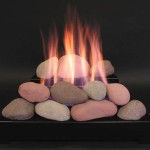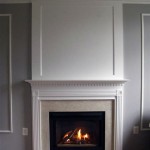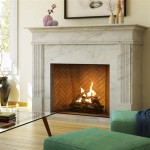Converting a Fireplace to a Wood Burning Stove: A Comprehensive Guide
Converting a fireplace to a wood-burning stove offers a number of advantages, including enhanced heating efficiency, a more aesthetically pleasing design, and the ability to enjoy a cozy fire without sacrificing significant heat through the chimney. While the process may seem daunting, with careful planning and execution, it can be a rewarding project that significantly improves the functionality and comfort of your home.
Considerations Before Conversion
Before embarking on a fireplace-to-stove conversion, it's crucial to carefully consider several factors:
- Structural Integrity: Ensure your fireplace's structure is sound and can adequately support the weight of a wood-burning stove. A qualified professional should inspect the existing chimney and fireplace for any repairs or reinforcements required.
- Chimney Size and Condition: The existing chimney must be an appropriate size and condition for the proposed wood-burning stove. A smaller stove will generally require a smaller chimney opening. A thorough chimney inspection is essential to identify any potential problems, such as blockages, cracks, or corrosion, that may need to be addressed before installation.
- Building Codes and Regulations: Consult local building codes and regulations to ensure your project complies with safety and fire codes. Codes may dictate the type of stove you can install, the required clearances, the chimney lining, and other specifications.
- Stove Size and Type: Choose a stove that suits your needs and fits appropriately within your fireplace opening. Consider factors like heating capacity, aesthetics, and fuel efficiency. Options range from freestanding wood-burning stoves to insert stoves that fit directly into the fireplace opening.
The Conversion Process
Once the necessary preparations are complete, the conversion process generally involves the following steps:
1. Preparing the Fireplace
Begin by removing the fireplace mantel and hearth if necessary. Clean the fireplace thoroughly, removing any debris, soot, or ash. If the fireplace opening is too large for the stove, install a firebrick or heat-resistant material to reduce the size of the opening and create a snug fit for the stove. This step ensures proper combustion and heat distribution.
2. Installing the Stove
Carefully position the wood-burning stove within the fireplace opening, ensuring it is level and centered. Consult the manufacturer's instructions for proper installation specifications and clearances. Secure the stove to the fireplace hearth or a designated stand using appropriate hardware.
3. Connecting the Stove to the Chimney
Install a stovepipe or flue pipe, designed specifically for wood-burning stoves, connecting the stove to the existing chimney. Ensure the pipe is properly secured and supported with secure clamps or brackets. The pipe must be the correct size for your stove and the chimney, and it should extend through the chimney to the top.
4. Installing a Damper
Install a damper on the stovepipe to control airflow and regulate the fire. A damper allows you to close the pipe when the stove is not in use, preventing unwanted drafts and heat loss.
5. Final Touches
After the stove is installed, connect the stovepipe to the chimney flue, then carefully seal any gaps or cracks around the stove with high-temperature sealant. Conduct a thorough inspection to ensure all connections are secure and there are no potential fire hazards. You may need to adjust the stove's position to achieve optimal airflow and heat distribution. Once the installation is complete, enjoy the warmth and ambiance of your new wood-burning stove.
Benefits of Converting a Fireplace to a Wood Burning Stove
Converting a fireplace to a wood-burning stove offers a range of benefits, making it a worthwhile endeavor for many homeowners:
1. Increased Heating Efficiency
Wood-burning stoves provide significantly higher heat output and efficiency compared to traditional open fireplaces. The enclosed design of a stove traps heat more effectively, directing warm air into the room instead of allowing it to escape up the chimney.
2. Enhanced Design and Aesthetics
Wood-burning stoves come in a wide variety of styles and sizes to match your aesthetic preferences. Choosing a stove that complements your fireplace design and interior decor can enhance the fireplace's visual appeal and add a touch of elegance to your home.
3. Safety and Control
Wood-burning stoves offer a more controlled and safer burning environment than open fireplaces. The enclosed design reduces the risk of sparks and embers escaping, and the damper allows for precise control of the fire's intensity.
Converting a fireplace to a wood-burning stove is a significant project that requires careful planning, execution, and adherence to safety regulations. However, the benefits of increased heat efficiency, enhanced aesthetics, and improved safety make it a worthwhile investment for many homeowners.

Converting A Fireplace To Wood Burning Stove Chesneys

Converting Open Fire To A Wood Burning Stove In Exeter Simon Turner Showrooms Devon

Convert Fireplace To Wood Burning Stove Mantel Gas Back Bu

Converting A Fireplace To Wood Burning Stove Chesneys

Can You Convert A Gas Fireplace To Wood Burning Stove Direct Stoves

Should You Change Or Convert Your Wood Fireplace

Wood Burning Fireplace Inserts 1 Stove Insert Dealer

Wood Burner Conversion New Jersey Fireplaces Kjb

Removing An Old Woodstove Fireplace Insert Young House Love

Gas To Wood Fireplace Conversion Overland Park Ks Firplace Service








